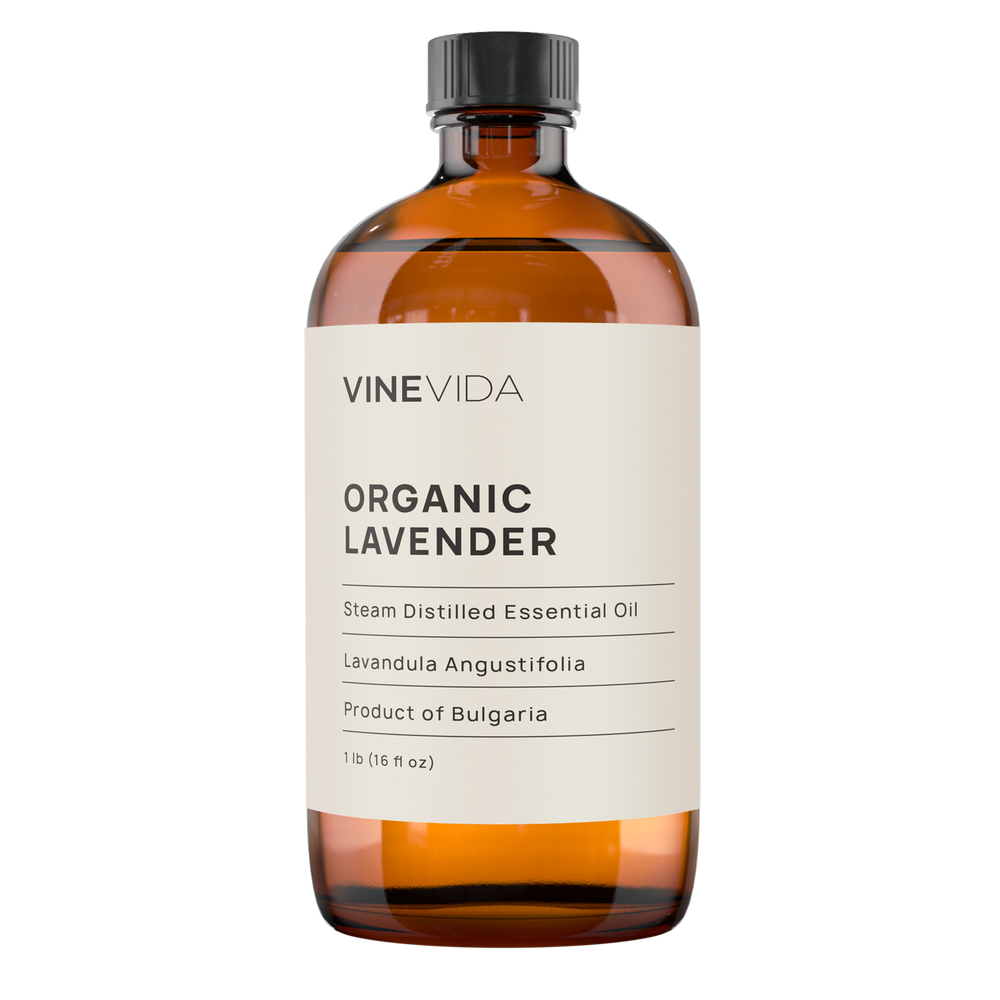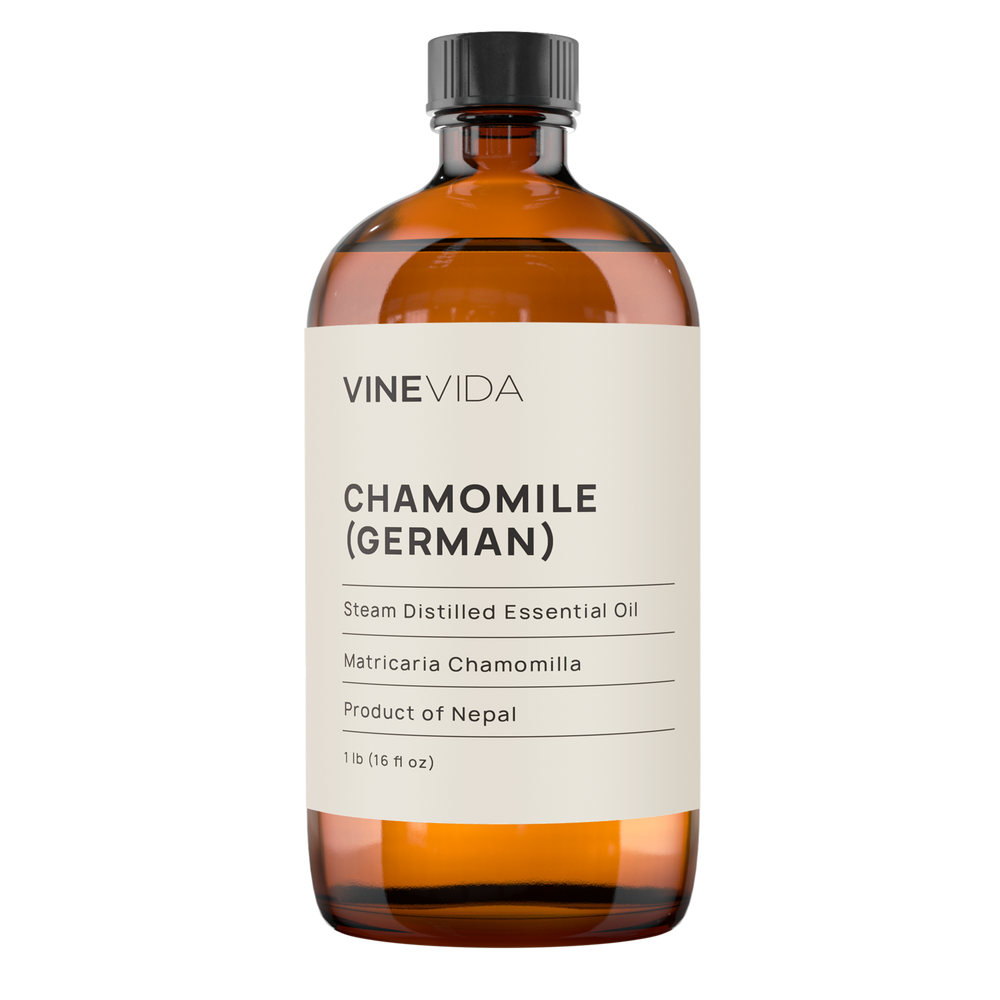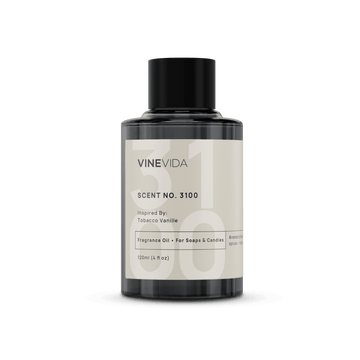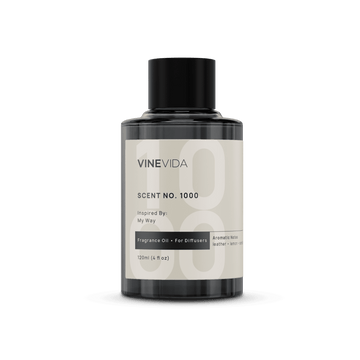Essential oils for trigeminal neuralgia work in different ways. Some, like lavender and chamomile, have analgesic properties. Peppermint interacts with pain receptors in the jaw. Lotus essential oil, a rare treasure, is being researched for its potential to regenerate nerves.
So let’s dig deeper and find some of the ways you might be able to use essential oils to soothe your nerve pain.
What Is Neuralgia

Neuralgia is nerve pain. It is usually recognized as a sharp stabbing pain, a burning sensation, or sometimes an ongoing dull throbbing ache. Neuralgia is often caused by injury or damage to the nerve. It can happen anywhere in the body, and various factors might cause damage. For example, diseases such as diabetes or multiple sclerosis may sometimes trigger attacks or can also be caused by infections like shingles. Aging can also be a factor.
Trigeminal neuralgia relates explicitly to pain in the nerves of the jaw. In addition to the above causes, sometimes an abscess or artery might be resting on the nerve. Other times, the joint may have been overstretched from dental work, oral sex, or eating.
Signs and Symptoms of Trigeminal Neuralgia
The main signs and symptoms of trigeminal neuralgia are pains down one side of the face. Many people describe this as feeling like an electric shock.
It affects the trigeminal nerve, which relays details about facial sensations to your brain. For example, it helps us chew by transmitting information about the foods we put in our mouths. Even the gentlest facial movements can be painful for people with trigeminal neuralgia.
This can be an acute or chronic condition. Initially, attacks can be mild, short, and sporadic. Then, however, trigeminal neuralgia can progress and cause longer, more-frequent bouts of excruciating pain.
Statistically, 150,000 new people are diagnosed with trigeminal neuralgia annually, which is more likely to affect women more often than men. In addition, it has a higher occurrence in people over 50.
Studies of groups of people with trigeminal neuralgia suggest there could be a higher likelihood of developing the condition if you have diabetes. In this case, the damage probably occurs because of changes in blood glucose.
Is Using Essential Oils Safe If You Have Neuropathy?
Neuralgia is a symptom of neuropathy, a nerve condition that often can result in numbness, tingling, swelling, pain, or muscle weakness in different body parts. One of the most common forms is diabetic neuropathy which usually begins in the hands or feet but worsens over time. Damage or irritation from this transmits pain along the nerve pathway in the form of neuralgia.
Essential oils can be a fantastic support for people with neuropathy, helping from several angles. Predominantly, we are interested in how they might be able to soothe the pain. This is important because doctors do not have many answers for long-term chronic pain. Opioids that work for short-term acute pain can be highly problematic long term. The Mu opioid receptor is responsible for tricking the brain into thinking pain has increased, so it can have more analgesic drugs to feed addictions. In addition, accidental and deliberate overdoses are common with opioid medications. Therefore, patients need to find alternative ways to manage their pain at some point.
Nociception is the signaling that comes from pain receptors. Allodynia is a specific type of hypersensitized nerve pain; in other words, the nociception signaling is set too low, so even the slightest movement registers on the pain scale. Allodynia is easy to achieve in rodent experiments, so scientists do this to find essential oils that might normalize pain signaling or reduce allodynia. Consequently, we have a lot of data on allodynia and hypersensitized pain conditions, but very little has yet been tried in human trials. Nevertheless, some common essential oils have shown exciting results, so let’s look at some neuropathy essential oils.
Also Read: What Are The Best Carrier Oils For Face?
Which Oils Are Most Effective for Trigeminal Neuralgia?
1. Lavender
Lavender is probably the most important of the essential oils due to its high levels of linalool and linalyl acetate. In addition, Linalool is proven to have an analgesic effect.
In 2020, lavender revealed that its antihyperalgesic effect from inhalation was brought about through the Mu and cannabinoid receptors (Donatello, 2020)
The Mu receptors that opium works with are fascinating things. Local anesthetics block the pain sensation, so they effectively numb the area. However, Mu receptors block the perception of pain. So it’s not the pain that is affected; it's just less of a distraction than it used to be. It’s not uncommon for patients on opioids to say that the pain is still there, but it's not hurting now. (Pasternak, 2013)
Inhalation of lavender essential oil is proven to work exactly this way and reduce a person’s perception of pain.
However, Donatello et al. revealed that linalool might also interact with the CB2 receptors. CB2 receptors are what are known as endogenous cannabinoid receptors, in other words, ones that occur naturally within the body. CB2 receptors modulate immunity, inflammation, and pain. Inhaling the lavender helps reduce inflammation and mild pain and reduce our perception of pain.
A 2021 study also gives us some insights into the effects of lavender. This time, massage, and how long it might take to improve. In this trial, people with diabetic neuropathy had a massage 10 minutes before bedtime for a month. Most people reported improvements after between 2 - 3 months. Now, in the case of essential oils for trigeminal neuralgia, we would suggest beginning protocols using inhalation only to avoid the pain of touching the nerve.
Safety: Lavender is not suitable for topical use in the first 16 weeks of pregnancy. Here, however, the benefits of alleviating the pain through inhalation outweigh any potential issues around pregnancy.
2. Bergamot
Bergamot is often used in clinical trials for neuropathy because it, like lavender, is also high in linalool and linalyl acetate. Neuropathy is a common side effect of chemotherapy treatments. Certain proteins in the spinal cord get caught up in the crossfire and are sadly damaged in the process.
In these experiments, bergamot extracts are usually injected intraperitoneally (into the rat’s belly), so the usage is very different from how we would use it in aromatherapy. However, it is worth remembering that researchers do these experiments to find a way to emulate what they already see working in natural medicine.
Bergamot seems to soothe pain hypersensitivity (Kuwahata, 2013). A 2021 trial also demonstrated that a bergamot polyphenolic extract (again, not essential oil) could protect patients undergoing chemotherapy from developing neuropathic pain. (Ilari, 2021)
Safety: Bergamot is a phototoxic oil, so avoid use before going out into direct sunlight. Use it in the evenings. If you find this a helpful oil, you can try and source bergamot FCF (Furanocoumarin Free), which has the problematic constituents removed and can then be used safely in the sunshine.
Not suitable for use in the first 16 weeks of pregnancy.
3. Rosemary
Rosemary is probably the most effective essential oil for nerve pain and is researched extensively to help people with diabetic neuropathy, in particular. But, again, the researchers were determined not to give any ammunition to aromatherapy, so they used an ultrasound hexane extraction this time. Still, it was on humans who had recently had surgery.
Sometimes, we need to be careful about rosemary trials because the herb has a very hard-working constituent called rosmarinic acid that is too large a molecule to pass through distillation. So often, we’ll read a report on what rosemary can do, but since the rosemarain acid does the magic, it won’t apply to the essential oil. However, in this case, the researchers said it was terpenes that had calmed the nerve signaling down (Manelli, 2016), and these are most certainly found in the essential oil.
In addition, rosemary has extremely efficient anti-inflammatory benefits. In 2008, a very upsetting-to-read trial described how rats had had allodynia chemically provoked in their paws and pleurisy in their lungs :(
This time, the treatment assessed was rosemary essential oil. Not only did it calm the inflammation, but it reduced the number of rats writhed in pain through its antinociceptive action. (Oh, that’s alright then!) (Takaki, 2008)
Safety: Rosemary essential oil can be problematic for some people with high blood pressure, epilepsy, or problems with psychosis or delusory conditions.
Not suitable for use in the first 16 weeks of pregnancy.
4. Peppermint
There is lots of research into peppermint oil for trigeminal neuralgia because menthol acts directly on the trigeminal nerve. The nerve is heavily laced with temperature receptors to transmit heat and cold signals. Specifically, there are many TRPV8 receptors. Trans Receptor Protein Vanillin's (TRPVs) send information about heat and pain. TRPV8 are receptors that send information about food being cold. These work hard if you have ice cream, for example. The chemical constituent menthol (found mainly in mints) is known to activate these nerve receptors.
Studies show that when used in very small dilutions, menthol has an anti-hyperalgesic action but can worsen the pain if used in high doses. (Patel, 2014) Consequently, when we use spearmint or peppermint essential oil for Trigeminal neuralgia, we would only want to use tinsy-wincey dilutions, starting at 0.25%.
In the same way, we would want to AVOID ones that activate the TRPV1 receptors that generate heat-pain responses. Cinnamon is the main one, but sometimes nutmeg or black pepper heat can be problematic. The main agonist is a constituent called capsaicin which is found in chilis. There is a chili essential oil; although it's not that common, the same applies to food you eat. So you might want to avoid hot spicy foods that can activate the pain signaling in the trigeminal nerve.
Safety: Oils containing high levels of menthol are not suitable for use on children under the age of ten.
Not suitable for use in the first 16 weeks of pregnancy.
5. Roman Chamomile
I recommend adding chamomiles and yarrow to any of your blends because these are your heavy-duty painkillers.
Roman chamomile is very anti-inflammatory, and I mean that on many different levels. I like it if there is skin redness, inflamed skin, and painful joints. Most important, though, is it soothes inflamed tempers. If you have been clenching your jaw, this is a brilliant help.
Safety: A very safe and gentle oil. Not suitable for use during the first 16 weeks of pregnancy; otherwise, no other concerns.
6. German Chamomile
This “Blue” chamomile is rich in a chemical group called azulenes, like liquid anesthetics. Perfect for acutely painful conditions. Most aromatherapists would agree that Chamomiles are the best essential oils to relieve pain.
Safety: A very safe and gentle oil. Not suitable for use during the first 16 weeks of pregnancy; otherwise, no other concerns.
7. Yarrow
Also contains its own variety of azulenes. So soothing and relaxing.
Safety: A very safe and gentle oil. Not suitable for use during the first 16 weeks of pregnancy; otherwise, no other concerns.
Essential Oil For Nerve Regeneration
Some exciting research has been done into Lotus essential oil for nerve regeneration. The trials are in their infancy and are rodent trials treated orally (I think). The researchers observed significant healing in the rat’s nerves after they had been treated with Lotus essential oil. The neural outgrowth was faster, and the nerve began to repair itself after injury. (Sriraksa, 2022)
Lotus is a rare and expensive essential oil since the places the lotus oil can grow are limited. In addition, it needs scorching heat and a certain degree of humidity. Today, most of the blossoms are grown in Sri Lanka. Smelling it is like a snapshot into ancient Egypt, as the Nile was full of them in Cleopatra’s day. Blue lotuses opened their petals to the sun at dawn, flooded the area with their perfume, then, at noon, disappeared under the water to be replaced by white Lotuses. Sadly, I can find no evidence of them using lotus for nerve problems, but in ancient Egypt, the blue lotus was used for anxiety, insomnia, and as an aphrodisiac.
Also Read: 10 Best Essential Oils For Face Treatments
A Potential Role of Stress and Relaxation
Managing your stress can be helpful in most hypersensitized pain conditions. This is because there are three different thicknesses of nerves, each of which transmits information at different speeds.
Imagine touching the stove by mistake. The most insulated fibers send mast signals to warn your brain to move your hand. The mid-thickness then reminds you that’s a stupid thing you have done, and the thinnest then sends a long, dull, throbbing ache to remind you to be careful not to do it again. These C fibers are indicated as the nerves that may transmit the toothache pain that never seems to go away. (Da Silva, 2012)
C fiber processing is affected by our mood. These fibers have been found to act like kissing gates and to change their processing based on the neurotransmitters at the synapse (the junctions between the nerve).
To transmit information correctly, there must be lots of GABA and enkephalins at the junction.
GABA is the body’s primary inhibitory neurotransmitter. It’s what calms the system down. Inhaling calming essential oils encourages the olfactory neurons to secrete more GABA.
Enkephalins may be an unfamiliar term. These are the same as endorphins - the body’s natural pain killers- found in the brainstem and spinal cord. The best way to increase enkephalins is to do some exercise.
Also Read: Best Essential Oils for Anxiety
Essential Oils for Trigeminal Neuralgia: How to Use Them
The golden rule is to remember that essential oils have a cumulative effect. The longer you use them, the better they will work. So have some patience and persistence, even if you don’t feel any improvements immediately.
This will be the best option if you can bear to put the blend onto your face. Experiment with your blend to ensure you like the fragrance before you put it onto your face. I’ve only had two clients refuse to use their treatments because they didn’t like the smell, and both had trigeminal neuralgia. It could be that the blend was too close to their noses or that their sense of smell was heightened from the condition.
If you don’t like having it on your face, that isn’t a problem. See the guidelines below.
If possible, I recommend using your treatment as many as five times a day. Then, take a fingerful of your cream and gently stroke it.
Also Read: How to Use The Best Essential Oils For Face Steaming?
How to Treat Trigeminal Neuralgia with Essential Oils If Touching Your Face is Painful
Always remember that there are two main ways that essential oils get into your body, through the skin and olfaction - i.e., when we breathe them in.
Inhalation is a constructive way to use essential oils in these conditions. Lavender and chamomile, in particular, calm the mental, emotional, and physical bodies. Stress plays a big part in nervous system problems; even clenching your jaw because you are irritated, getting calm will do you good.
Sitting inhaling the oil - from the bottle or with a couple of drops on a tissue for five mins a day can have profound effects.
Also, remember YOU DON’T NEED TO APPLY DIRECTLY TO THE PAIN.
Essential oils absorb through the skin and travel around the system to the places that need them. Other good places to apply your blends instead might be to the back of the neck so that the oils can get quickly to the brain or the slides of your wrists. The blue veins betray an excellent blood supply that will give you fast access to the bloodstream.
Steam
Ayurvedic medicine has a specific protocol for using herbs for trigeminal neuralgia treatment called swedana. Here, herbs, or in our case, essential oils, are placed into warm water so they can steam into the face and the nerve. The steam relaxes the nerve and surrounding muscles.
Traditionally, the client would sit in a chamber or have the steam piped through a tube to the area, but it is possible to emulate this, to a lesser degree, as a home treatment.
First, apply your blend of essential oils for trigeminal neuralgia to the area. Ayurveda believes that the head and eyes should be protected from heat, so you might want to place a damp face cloth on the top of your head to cover your eyes.
Then just hang your face over some water for a while. After that, you might want to make a tent with a towel to trap the steam.
Treatment is complete once the area has begun to sweat well; then, you should gently shower the area in warm water. Traditionally an hour after this kind of treatment, you would also eat something warm and light to continue the nourishing effects on the body.
DIY Recipe For Using Essential Oils For Trigeminal Neuralgia
Ordinarily, an essential oil recipe will have three oils, but I wanted to touch as many pain-killing bases as possible. Any one of these oils can be omitted if required.
- 2 oz (50ml) Aqueous Cream (Available over the counter at the pharmacy)
- 5 drops Lavender Essential Oil (Lavandula angustifolia)
- 5 drops Roman Chamomile Essential Oil (Anthemis nobilis)
- 5 drops German Chamomile Essential Oil (Matricaria recutita)
- 5 drops Yarrow Essential Oil (Achillea millefolium)
- 1 drop Rosemary Essential Oil (Salvia rosmarinus)
- 1 drop Peppermint Essential Oil (Mentha piperita)
Method of use: Apply about a fingerful of cream five times a day, or as and when needed.
Safety: Not suitable for use on children under 10 (peppermint). Rosemary can be problematic for some people who have high blood pressure and epilepsy or with psychotic or delusory conditions such as schizophrenia or psychosis. Not suitable for use during the first 16 weeks of pregnancy.
Other Natural Therapies for Trigeminal Neuralgia
Both chiropractic and acupuncture can also be beneficial for this condition.
All of the body's nerves (except the olfactory nerves) travel through the spine. If misalignments occur, vertebrae can rest on nerves transmitting pain along them. As a result, straightening the neck can often have tremendous consequences.
Acupuncture concentrates on removing blockages in the energy flow in the area and calming the signaling.
Also Read: Best Non-Comedogenic Carrier Oils For Face With DIY Facial Oil Recipes
Bottom Line
You can use essential oils for trigeminal neuralgia in many ways, whether inhaling them to calm the system, applying them directly to the jaw, or even rubbing them onto your neck to find their way to your jaw. In addition, avoid very hot or cold foods and find ways to manage your stress. All of these will make living with this painful condition easier.




















